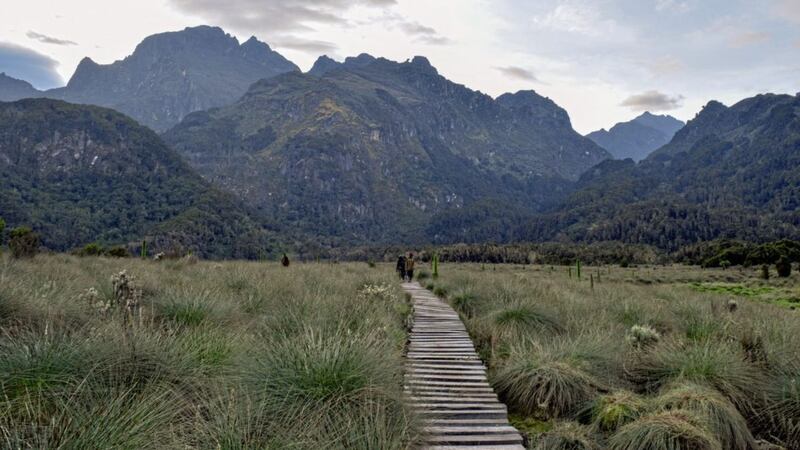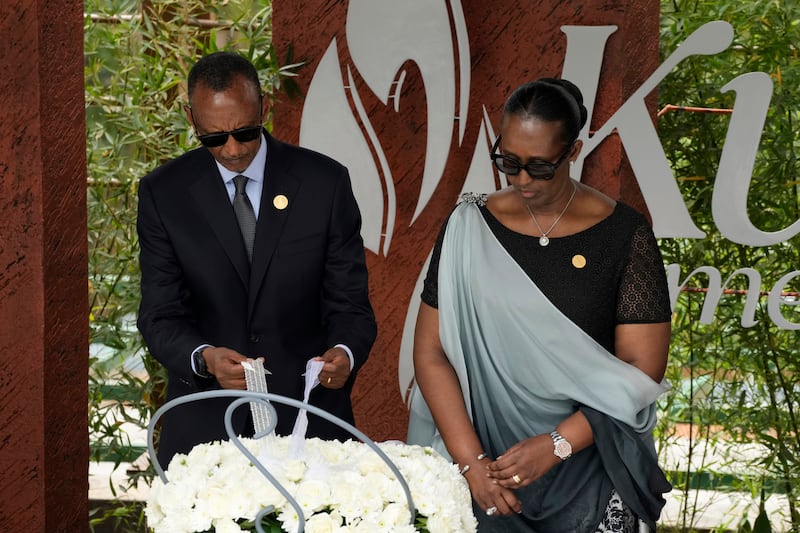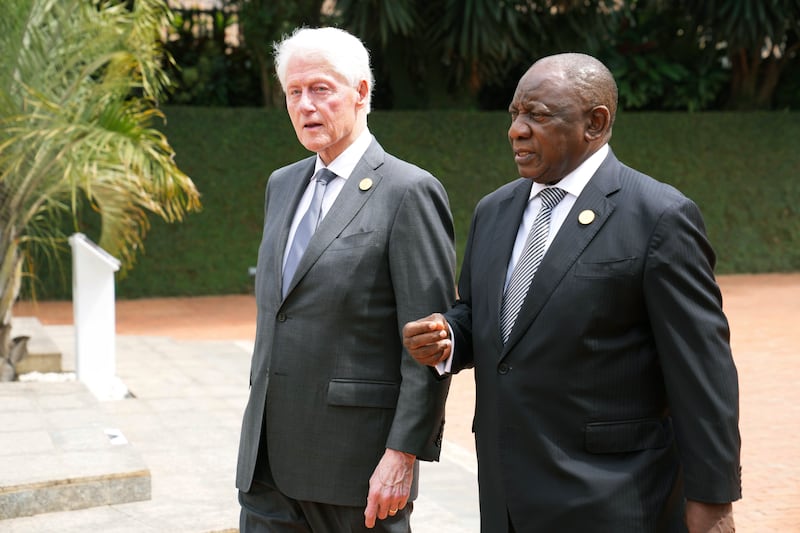WALKING in rural Uganda is unlike a safari of the traditional kind. No bumpy jeep rides shared with strangers’ camera lenses as long as your arm, shutters clicking like automatic weapons. Your feet are on the ground, eyes scanning for wildlife, or you’re walking to see a village community or pausing to take in the greenest landscapes anywhere in east Africa. The equator is never far away.
Uganda may be a country you know little about but Uganda knows about Ireland, welcoming you without charging $50 for a visa (as is the case with visitors from most other European countries).
Most Ugandans work in agriculture and potatoes, grown for domestic consumption, are always referred to as Irish potatoes. You see them stacked in little pyramids by the side of the road, on sale alongside bundles of charcoal. Plantains and green bananas are grown as cash crops and bulging bundles of them being transported by hand are a common sight, strapped to bicycles that leave no room for riders.
The Rwenzori Mountains in the west of the country are slowly being discovered as pristine, crowd-free trekking territory for people of all ages and ability. It’s a gruelling slog, a full-on week of walking and camping but with no mountaineering experience necessary – just pure stamina – to reach the highest, snow-capped peak on Mount Stanley (5,109m) but you can walk as many of the route’s sections as you wish and much shorter trips, including porters, meals and accommodation, are reasonably priced.
Rwenzori Trekking Services, who handle these treks, also offer a Community Walk led by a member of the local Bakonjo people who farm the slopes of the Rwenzoris. You pass their farm gardens bursting with exotic fruits and vegetables – avocado, mango, jackfruit, guava – growing alongside coffee plants and sugar cane.
Missionary work has converted most Bakonjo to Christianity – over 40 per cent of Ugandans are Catholics – and you pass a small prayer house on the Community Walk but some older members of the community retain a belief in a mountain-dwelling god. After two to three hours of walking, a picnic spot is reached in a small forest by a waterfall where your guide will look for the Rwenzori three-horned chameleon.
The fireplaces in the four cottages that make up Equator Snow Lodge are no affectation: situated at 1,600m, you’ll need a jumper at night even though the equator is only 25 miles away. The Lodge is convenient for Rwenzori walks and a blackboard at reception outlines a variety of treks, some local and others ascending into higher altitudes. At night the murmuring of the Mubuku River flowing past sends you gently to sleep.
A steep, narrow and forested valley lies less than 50 miles to the south of Equator Snow Lodge. Called the Kyambura Gorge, it stretches for seven miles and at its widest spans less than 450 yards. It is the only place in the Queen Elizabeth National Park (QENP) inhabited by a group of chimpanzees – our closest living relatives – that are habituated, making it possible to get within steps of them without causing alarm.
Tracking chimpanzees is a leisurely affair until your ears are assaulted by high-decibel screams that would terrify anyone in an urban environment. But then comes a series of raucous hoots which are oddly reassuring, sounding ludicrous in what until then has been a silent forest of ironwood trees. The screams and hoots convey a sense of mayhem, a sure sign that a family of chimpanzees are close by.
QENP is Uganda’s most biodiverse national park, borne out by a popular boat trip along a channel that connects Lake George and Lake Albert: hippos, elephants, buffalo and waterbuck are guaranteed to be seen close while crocodiles and oversized monitor lizards lie close to the banks.
Seeing lions in Queen Elizabeth National Park is one experience best done from the safety of a vehicle and not on foot. There are around 80 in the Park and a Predator Project monitors their activities with the help of radio collars attached to some of them. This virtually guarantees the sighting of a pride at close quarters.
Located high on an escarpment, Elephant Plains Lodge is close to Kyambura Gorge and only a mile from the equator. The Lodge commands a spectacular view of savannah and lake from the spacious balconies of its eight thatched cottages and dinner in semi-darkness by the pool is pleasantly romantic.
The walking experience that catches the limelight in Uganda is a trek to get within metres of mountain gorillas. The country’s last census indicated a population of 400 and although there are twice as many in neighbouring Rwanda the cost of a permit there is considerably higher: $1,500 compared to Uganda’s $600. Unless you have lots of money to spare or are willing to venture into the Democratic Republic of Congo (with 200 gorillas), western Uganda is the best place to see gorillas in the wild.
Bwindi Impenetrable National Park is famous for its gorillas and other walking activities are available. At Gorilla Safari Lodge, conveniently close to the Park, you can go on a community walk to a local Batwa community. The Batwa were a semi-nomadic, forest-dwelling people who lived by hunting and gathering until they were compelled to move into permanent settlements in the early 1990s. Forced to give up their centuries-old way of life, without compensation, most remain officially landless.
Amid its verdant, tropical landscapes, Uganda offers cultural encounters and once-in-a-lifetime wildlife experiences without the package tourist industry bearing down on you. You’ll see other travellers but rarely in large groups and Ugandans are easy-going people to mix with. Tourism is important to the country but the vast majority of Ugandans get on with their lives regardless and this is part of the pleasure of being there.
FACT FILE
:: Gorillas:
Although a sighting of gorillas in Uganda is not guaranteed, you’re virtually sure to see these primates because trackers work ahead of the group you’re in – restricted to eight people – and they notify your guide once they find the gorilla family you’ve been allocated to follow.
What is less certain is how long you walk before encountering them – from one hour to four – and then there’s the walk back down the forested mountain. The 60 minutes you’re allowed to spend in their company makes it all feel worthwhile, especially if you can stop angling for that elusive perfect photograph and just observe their behaviour. Like the chimps in Kyambura, they are used to other primates and will mostly ignore your presence; which is just as well given that muscle-bound males reach 6 feet in height and weigh up to 220kg.
:: Getting there:
Ethiopian Airlines (ethiopianairlines.com) flies to Entebbe via Addis Ababa.
:: Tours:
- Rainbow Tours (rainbowtours.co.uk) offer tailor-made trips that include Rwenzori Mountains, Queen Elizabeth National Park and Bwindi Impenetrable Forest National Park. Packages from £4,835 include flights, transportation on the ground, a driver-guide, gorilla and chimpanzee permits, accommodation and all meals.
- A Community Walk with Rwenzori Trekking Services (rwenzoritrekking.com) is £6; one-day Forest Walk £30; two-day/one-night trek, ascending to 2,585m, £150; a week-long ascent to the higher peaks from £800.
:: Guidebooks:
The eighth edition of the Bradt Guide to Uganda is packed with practical information for travellers with various budgets.








